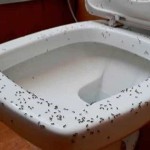Water Leaking Through Ceiling From Upstairs Bathroom: A Comprehensive Guide
A water leak from an upstairs bathroom can be a frustrating and costly problem. It can damage your ceiling, walls, and furniture. If left unchecked, it can even lead to mold and mildew growth. In this article, we will discuss the causes of water leaks in upstairs bathrooms and provide step-by-step instructions on how to fix them.
Causes of Water Leaks in Upstairs Bathrooms
There are several possible causes of water leaks in upstairs bathrooms, including:
- Leaking pipes: Pipes can leak due to corrosion, damage, or loose connections.
- Cracked shower pans: The shower pan is a waterproof liner that prevents water from leaking through the floor. If the shower pan is cracked, water can seep through and leak into the ceiling below.
- Damaged grout: Grout is a type of sealant that is used to fill the joints between tiles. If the grout is damaged, water can penetrate the joints and leak through the ceiling.
- Loose or missing caulk: Caulk is a type of sealant that is used to seal gaps around fixtures and plumbing. If the caulk is loose or missing, water can leak through the gaps and into the ceiling.
- Faulty plumbing fixtures: Plumbing fixtures such as toilets, sinks, and showers can leak if they are not properly installed or maintained.
How to Fix Water Leaks in Upstairs Bathrooms
The first step in fixing a water leak in an upstairs bathroom is to identify the source of the leak. Once you know where the leak is coming from, you can take steps to repair it.
If the leak is coming from a pipe, you will need to:
- Turn off the water supply to the pipe.
- Cut out the damaged section of the pipe.
- Install a new section of pipe.
- Turn on the water supply and check for leaks.
If the leak is coming from a cracked shower pan, you will need to replace the shower pan. To do this, you will need to:
- Remove the old shower pan.
- Clean the area where the new shower pan will be installed.
- Install the new shower pan.
- Reinstall the bathroom fixtures.
If the leak is coming from damaged grout, you will need to replace the grout. To do this, you will need to:
- Remove the old grout.
- Clean the area where the grout will be installed.
- Apply new grout.
- Allow the grout to dry.
If the leak is coming from loose or missing caulk, you will need to apply new caulk. To do this, you will need to:
- Remove the old caulk.
- Clean the area where the caulk will be applied.
- Apply new caulk.
- Allow the caulk to dry.
If the leak is coming from a leaky toilet, sink, or shower, you will need to replace the fixture. To do this, you will need to:
- Turn off the water supply to the fixture.
- Disconnect the fixture from the plumbing.
- Remove the old fixture.
- Install the new fixture.
Conclusion
By following these steps, you can successfully fix a water leak in an upstairs bathroom. If you are not comfortable performing any of these tasks, it is best to call a qualified plumber for assistance. Ignoring a water leak can lead to serious damage to your home, so it is important to address the problem promptly.

Is Water Leaking Through Ceiling After You Shower Robinson Plumbing

Water Stain On The Ceiling That S A Serious Plumbing Problem Reliance Sewer Drainage Inc

Upstairs Leak Las Vegas Plumber Bloggin Innovative Plumbing Pros

Shower Leaking Through Ceiling 8 Likely Causes

Water Leaking Through Ceiling Below Bathroom Easy Fix Diy Plumbing Fail

Upstairs Bathroom Flooded Leaking Through Ceiling

Water Leaking On The Ceiling Downstairs From Upstairs Bathroom Plumbing Nightmare Diy Fix

Bath Leaking Through Ceiling Top Likely Causes

How To Check For Bathroom Leaks My Plumber Guide

Upstairs Bathroom Shower Is Leaking Through The Ceiling Atlanta Ga Plumbers







